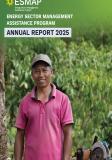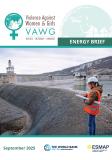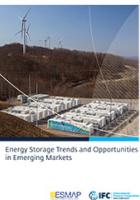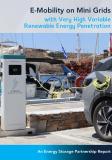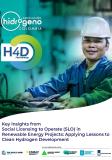Publications
Energy storage is a crucial tool for enabling the effective integration of renewable energy and unlocking the benefits of solar and wind power for emerging markets. But how big is the opportunity, and how imminent?
A new report commissioned by IFC and ESMAP finds that energy storage deployments in emerging markets are expected to grow 40 percent annually over the coming decade, resulting in about 80 gigawatts of new storage capacity. This will be a significant increase upon the less than 2 GW of capacity currently in place.
The report outlines the principal uses, drivers, and challenges regarding the commercialization of energy storage technologies in low- and middle-income countries, providing a forecast of expected deployments by region and impacts on energy access, grid stability, and other key areas. Technical review was provided by the U.S. Department of Energy's Clean Energy Investment Center.
-
The largest energy storage markets in the coming decade are expected to be China and India, supported by those countries’ ambitious renewable energy targets.
-
Latin America is another attractive market for energy storage development, given the region’s renewable energy roll-out plans – particularly in Mexico, Chile, and Brazil.
-
In South Africa, storage is expected to be driven by greater integration of renewables.
-
In MENA, many countries are looking to deploy large amounts of renewable energy to reduce the amount of domestic fossil fuels used for local power generation – freeing up that fuel to be sold abroad, bringing in revenue for government programs.
Learn more about the ESMAP Renewable Energy Program
